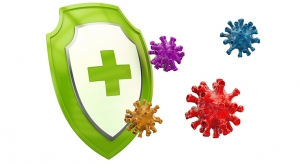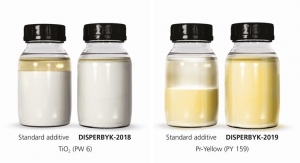Over the last few years, the use of coating additives has become quite prominent in a number of industry verticals, as they help overcome flaws & blemishes found in surface and issues that turn up during the application of paints or post-drying.
Silicone additives have long been considered as a standard choice for laying out special properties to inks, veneers, and crusts including better slip, mar detention, razing & foam control, and many more.
Moreover, since silicones are highly effectual at very low absorptions, they are widely utilized to heighten and enhance the product properties.
Additives are now widely being used to eradicate several manufacturing glitches and to perk up the performance of the final product.
There are a plethora of ventures that provide the customers with the flexibility to choose between a neat form and an appropriate solvent. These products are highly fabricated to cater to the requirements of different coating systems such as flush, solvent, powder, water, etc.
Now, as a business owner, you should always make sure that the coating additives manufactured from your unit are produced to the highest standards to cook for the customers’ requirements.
However, the first wave of Covid-19 created a tremor in almost all the industries. And, the additive sector was also not an exception in this regard.
But, government bodies across the world are now coming up with several relaxations on the existing norms and with this drift on board, the market is expected to get back to a kind of normalcy.
The global coating additives industry has now welcomed back all customers, associates, and patrons who had been impacted by plant closures and shutdown. They are now able to resume operations though. Still, a basic vigilance and appropriate safety measures must always be maintained.
This post is going to shed some light on things you should follow to help your customers select the right additives.
You should always work closely together with our customers to choose the right additives to inscribe economic and environmental concerns and improve the paints’ performance to the fullest. You should give more focus on solutions for water-based constructive varnishes that fulfill the ecolabel criteria.
Here, wetting agents tend to brush up compatibility, lessen rub-out properties, and stimulate the coating’s storage permanence, scrub resistance, gloss, and foaming comportment. All your products should be APEO-free and ecolabel-acquiescent. There are certain wetting agents that are utilized as process aids to heighten and elevate the processing time. It’s worth mentioning that wetting agents can also help evade agglomeration, and this is particularly important in areas where manufacturing methods involve hard tap water in the process.
Similarly, multifunctional neutralizing agents not only modify and fine-tune the pH value of the paint formula but also form a constant system among the paint modules. Sustainable VOC/SVOC-free substitutes do not require any painstaking labeling and are, therefore, the ideal component for ecolabel-ratified paints.
The new generation of biocide-free paints doles out the advantage for consumers to be less allergenic. As they are mineral-based, biocide-free paints are accounting for a healthier indoor temperature by providing better vapor penetrability.
Modern coatings, however, come up with complex formulations with stiffeners, emulsifiers, dispersing agents, dyes, defoamers, colorants, leveling agents, photo-aviators, curing substances & compounds, and other additives. These additives, in turn, perk up the inherent properties of the resin.
Flow and leveling agents are undoubtedly the most vital class of additives.
Numerous defects can ensue while the film is being formed. And, localized surface tension gradients are responsible for forming the flaws and deficiencies. Here, surfactant-based flow and leveling agents tend to do wonder by abridging the surface tension of the carrier fluid, which lets the solution flow with much ease and moderates the strength of the gradients.
Gloss development from additives is usually an outcome of enhanced flow and leveling. A uniform, smooth, and defect-free plating has a high distinctness of image enabling one to discern and understand the gloss of the resin to its extreme effect. Additive artists can also take recourse to flow and leveling agents with higher deflection catalogs which would proffer a higher gloss.
At the air/liquid edge, low-surface-tension properties transmute foam more efficaciously than high-surface-tension ingredients. Again the solution needs to have a lower surface tension than the foam mediator to be in effect. With all these interfaces on board, the use of additives has become predominant among several industry sectors.
According to Allied Market Research, the global coating additives market is expected to register a considerable CAGR from 2016 to 2022.
To put together, anti-foaming can be defined as a method of thwarting foam formation on paint layers & crusts.
Wetting & dispersion, on the other hand, tend to offer the much-needed equilibrium to the layers by using a deflocculating effect. Rheology modification, at the same time, refers to the modification in the arrangement or configuration of materials due to external stress to enhance the thickness and viscidness of covered or glazed surfaces. Simultaneously, biocides tend to fend off paint films from a microbial impairment, including fungoid and mycological growth caused due to moist or sultry surroundings. Last but not the least; impact modification is mostly used for slips, panes, packaging films, and others to prevent distortion of surface. Other functions of these additives include aeration, surface adjustment, leveling, anti-bulging, and more. To sum up, it can be said that the global coating additives market has already started proliferating at a fast pace and it’s projected to balloon up yet more.




























